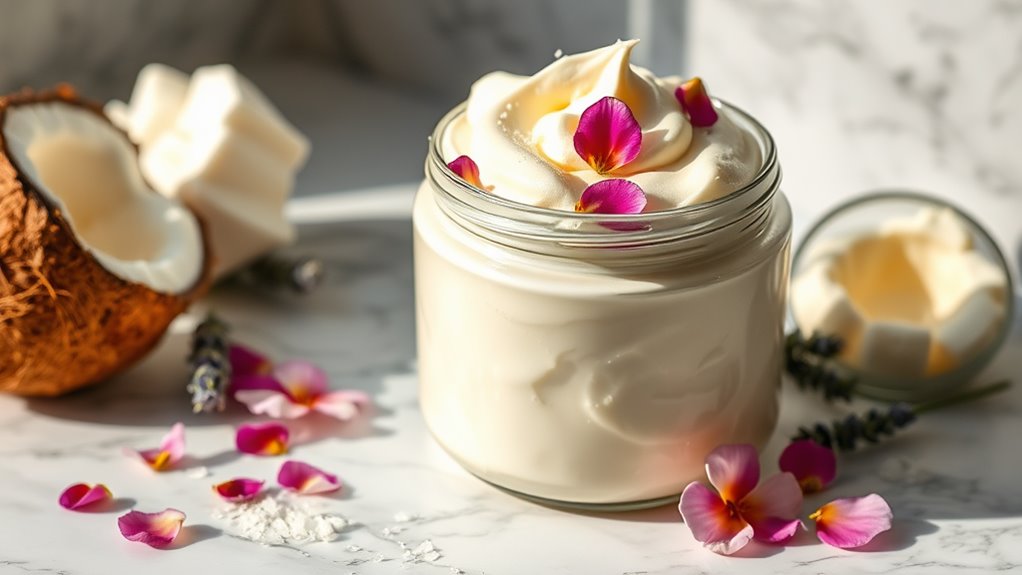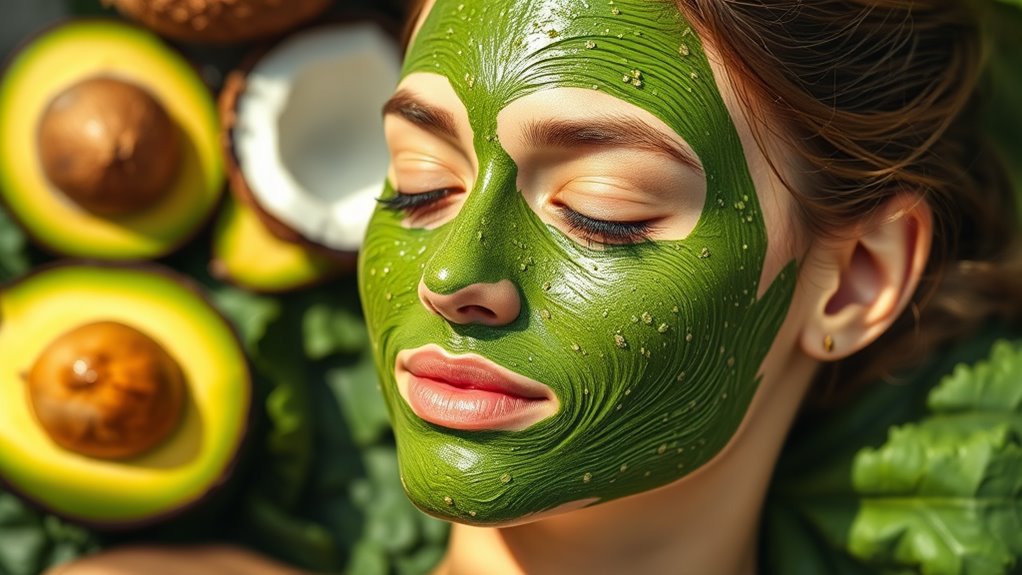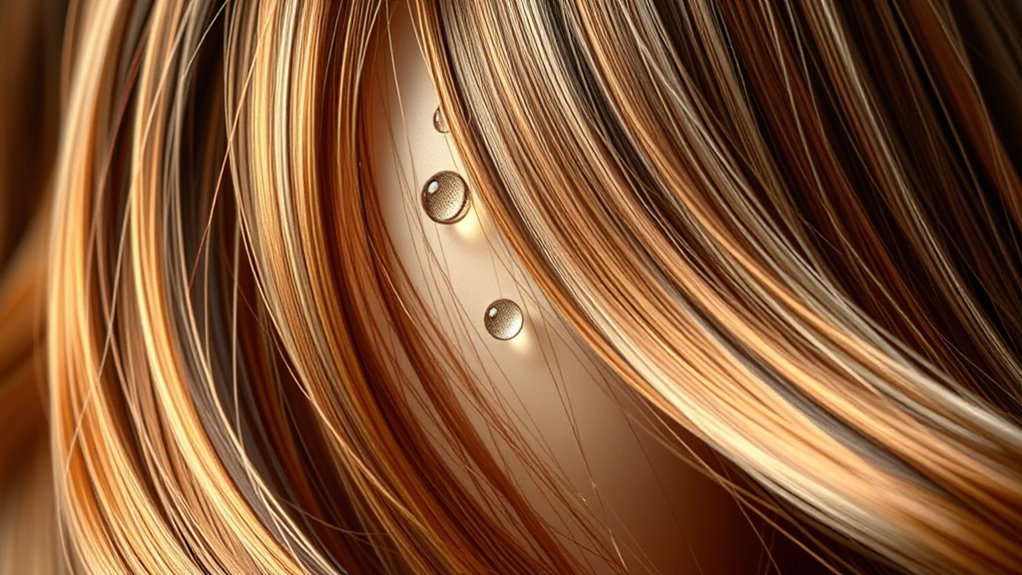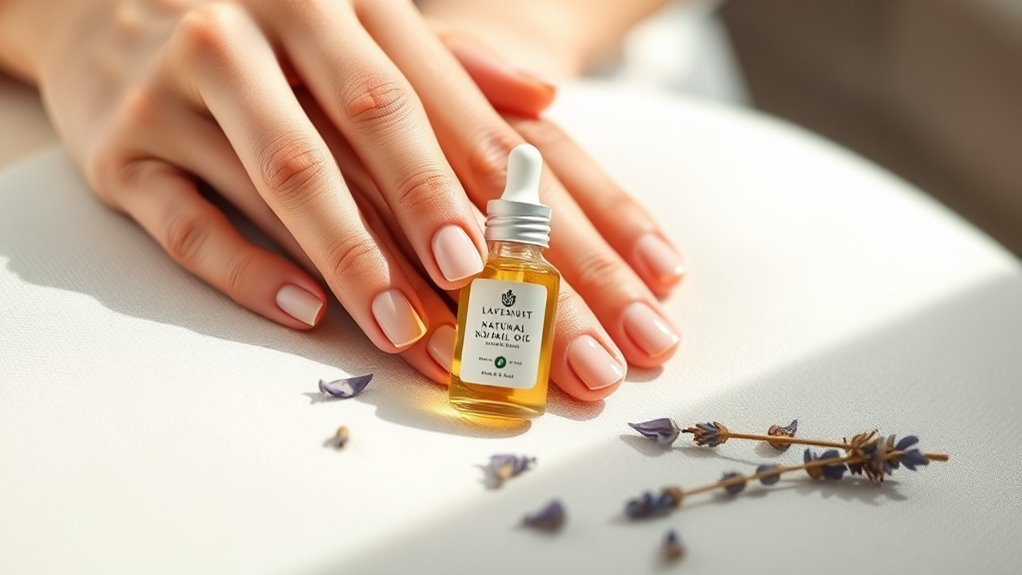DIY Body Butter That Feels Like a Spa in a Jar!
Creating your own body butter, indulging in self-care, and enjoying the benefits of natural ingredients are all within your reach. With a few simple components, you can craft a luxurious product that hydrates and nourishes your skin. Imagine enveloping yourself in a rich, creamy texture that absorbs quickly and leaves you feeling refreshed. Curious about how to make this spa-like experience a reality? Let’s uncover the essential ingredients and steps to whip up your own body butter.
Key Takeaways
- Create a luxurious body butter using shea or cocoa butter for deep hydration that leaves skin feeling pampered.
- Incorporate essential oils like lavender or chamomile for a soothing aroma that enhances the spa-like experience.
- Whip your mixture to a fluffy consistency, ensuring a light texture that absorbs quickly without greasiness.
- Customize your body butter with floral or fruity scents by blending essential oils to suit your mood and preferences.
- Store your body butter in an airtight glass jar to maintain its freshness and effectiveness for a spa-like indulgence anytime.
Benefits of Homemade Body Butter
Homemade body butter offers a plethora of benefits that commercial products often can’t match. When you whip up your own, you control every ingredient, ensuring no harmful chemicals touch your skin.
This luxurious cream deeply nourishes and hydrates, leaving your skin feeling soft and supple. Unlike store-bought options, homemade body butter can be customized with your favorite scents and textures, making it uniquely yours.
You’ll find that it absorbs quickly, without greasiness, and provides long-lasting moisture. Plus, the joy of creating something from scratch adds a personal touch to your self-care routine, turning pampering into an art form. Additionally, using natural ingredients allows you to avoid synthetic additives and preservatives often found in commercial products.
Essential Ingredients for Your Body Butter
Creating your ideal body butter starts with selecting the right essential ingredients.
Begin with a base of shea butter or cocoa butter for deep hydration and nourishment.
Next, add coconut oil for its lightweight texture and delightful scent.
Don’t forget a nourishing oil, like almond or jojoba, to lock in moisture.
For added benefits, consider essential oils like lavender for relaxation or citrus for an energizing boost.
Vitamin E oil can enhance the shelf life and provide extra skin protection.
These ingredients not only hydrate but also transform your body butter into a luxurious experience that’s perfect for pampering yourself! Additionally, using homemade body oil recipes can further enhance your skin health and self-care routine with nourishing benefits.
Step-by-Step Instructions
Now that you’ve gathered all the necessary ingredients for your body butter, it’s time to bring it all together.
Start by melting your butters and oils in a double boiler over low heat.
Once melted, remove from heat and let it cool slightly.
Next, whip the mixture with a hand mixer for about 5 minutes until it’s fluffy and creamy.
If you want to add any additional ingredients, like vitamin E, now’s the time. Making your own products allows you to embrace natural beauty while avoiding harmful additives.
Transfer your body butter into a clean jar and let it set at room temperature.
Enjoy your luxurious, homemade body butter that feels divine!
Customizing Your Body Butter Scents
Have you ever wondered how to infuse your body butter with delightful scents that match your mood or personality?
Start by choosing essential oils, like lavender for relaxation or peppermint for an energizing boost.
Just 10-15 drops can transform your butter.
For a floral touch, consider adding rose or jasmine oils.
If you prefer something fruity, try citrus oils like sweet orange or lemon.
Experiment with combinations, mixing a few drops until you find your perfect blend.
Remember, a little goes a long way!
Personalizing your scent not only enhances your body butter but also elevates your self-care ritual to a whole new level. Additionally, creating your own blend allows you to experience therapeutic benefits that can enhance your overall well-being.
Storage and Usage Tips
How can you ensure your homemade body butter stays fresh and effective? Store it in a cool, dark place, preferably in an airtight glass jar. This keeps air and light from degrading its quality.
When you’re ready to use it, scoop a small amount with clean fingers or a spatula to avoid contamination.
A little goes a long way, so massage it into your skin daily, focusing on dry areas. If you notice any changes in texture or scent, it’s time to toss it. Additionally, consider incorporating a nourishing DIY face oil blend into your skincare routine for added hydration.
With proper care, your body butter will deliver that luxurious spa feeling every time!




